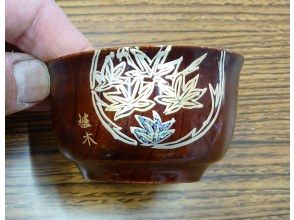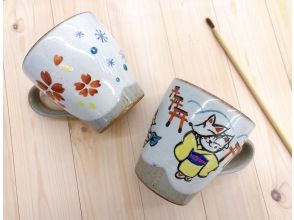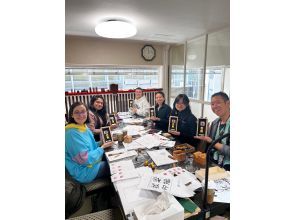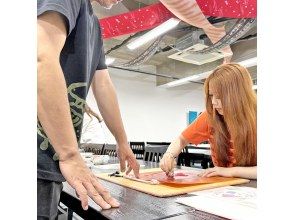Popular ranking of traditional craft experiences! A thorough introduction to recommended manufacturing and handmade experiences in Kanto and Kansai!
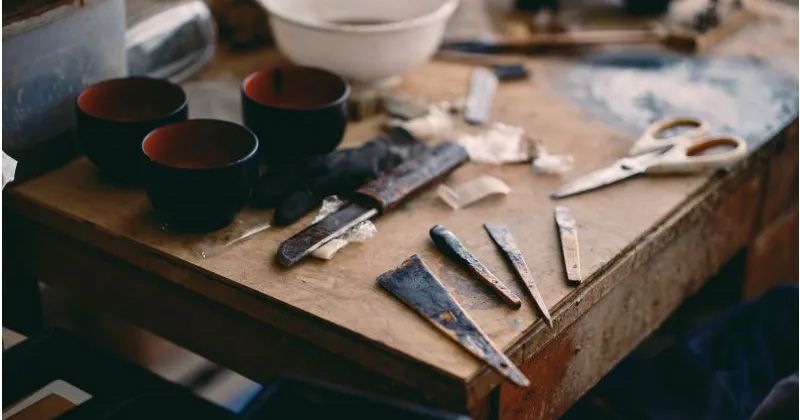
On this page, we will introduce the " traditional crafts ” special feature on experience plans and workshops!
All over the country, including the Kanto region including Tokyo and Kanagawa, and the Kansai region including Kyoto. Thorough introduction of recommended plans for traditional craft experiences (recommended manufacturing/handmade experiences) To do.
Along with the reservation popularity ranking, types, numbers, famous prefectures, etc. Check all the knowledge related to traditional craft experiences Let's do it.
table of contents
- 1 What is traditional craft?
-
2
List of types of traditional crafts
- 2.1 Traditional crafts of Hokkaido
- 2.2 Traditional crafts of Aomori
- 2.3 Traditional crafts of Iwate
- 2.4 Traditional crafts of Miyagi
- 2.5 Akita's traditional crafts
- 2.6 Traditional crafts of Yamagata
- 2.7 Traditional crafts of Fukushima
- 2.8 Traditional crafts of Ibaraki
- 2.9 Traditional crafts of Tochigi
- 2.10 Traditional crafts of Gunma
- 2.11 Traditional crafts of Saitama
- 2.12 Traditional crafts of Chiba
- 2.13 Traditional crafts of Tokyo
- 2.14 Traditional crafts of Kanagawa
- 2.15 Traditional crafts of Niigata
- 2.16 Traditional crafts of Yamanashi
- 2.17 Traditional crafts of Nagano
- 2.18 Traditional crafts of Gifu
- 2.19 Traditional crafts of Shizuoka
- 2.20 Traditional crafts of Aichi
- 2.21 Traditional crafts of Mie
- 2.22 Traditional crafts of Toyama
- 2.23 Traditional crafts of Ishikawa
- 2.24 Traditional crafts of Fukui
- 2.25 Traditional crafts of Shiga
- 2.26 Traditional crafts of Kyoto
- 2.27 Traditional crafts of Osaka
- 2.28 Traditional crafts of Hyogo
- 2.29 Traditional crafts of Nara
- 2.30 Traditional crafts of Wakayama
- 2.31 Traditional crafts of Tottori
- 2.32 Traditional crafts of Shimane
- 2.33 Traditional crafts of Okayama
- 2.34 Traditional crafts of Hiroshima
- 2.35 Traditional crafts of Yamaguchi
- 2.36 Traditional crafts of Tokushima
- 2.37 Traditional crafts of Kagawa
- 2.38 Traditional crafts of Ehime
- 2.39 Traditional crafts of Kochi
- 2.40 Traditional crafts of Fukuoka
- 2.41 Traditional crafts of Saga
- 2.42 Traditional crafts of Nagasaki
- 2.43 Traditional crafts of Kumamoto
- 2.44 Oita traditional crafts
- 2.45 Traditional crafts of Miyazaki
- 2.46 Traditional crafts of Kagoshima
- 2.47 Traditional crafts of Okinawa
- 3 Traditional craft experience popular plan ranking
- 4 Feature articles recommended by the editorial department
What is traditional craft?
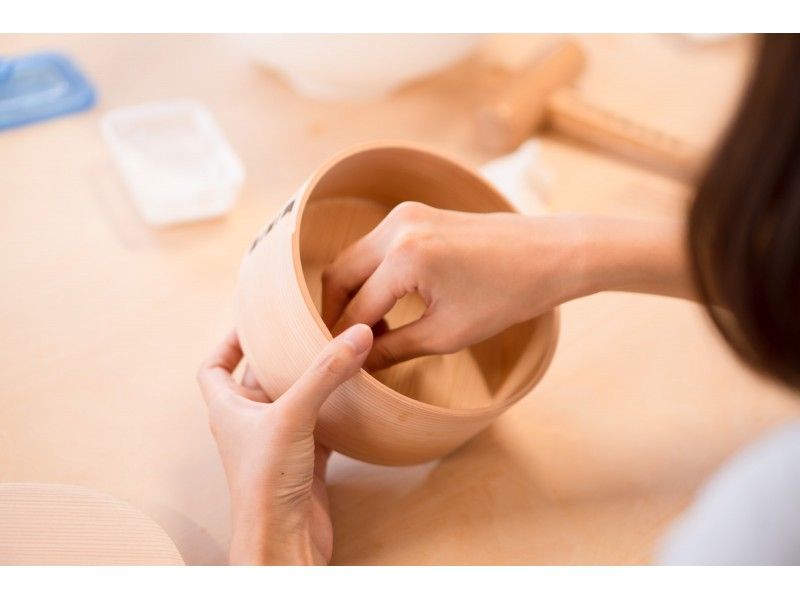
First of all" traditional crafts What? For those of you who are interested in this topic, I would like to review the basic knowledge.
What is traditional craft? Crafts made using traditional raw materials and manufacturing methods/techniques About.
Currently, as a traditional craft There are 241 varieties designated by the country. It is manufactured by approximately 3,600 traditional craftsmen nationwide.
The criteria for being called a traditional craft are: It is something that can be used on a daily basis, much of the manufacturing process is done by hand, it requires advanced technology, and it has a history that has been passed down from ancient times. , etc.
Typical examples include ceramics, textiles, glasswork, lacquerware, woodwork, bamboo work, and dyed goods.
There are many traditional crafts that have been handed down in Japan since ancient times. Not only in domestic demand, but also attracting attention from all over the world as “Made in Japan” are collecting.
Recommended feature articles
List of types of traditional crafts
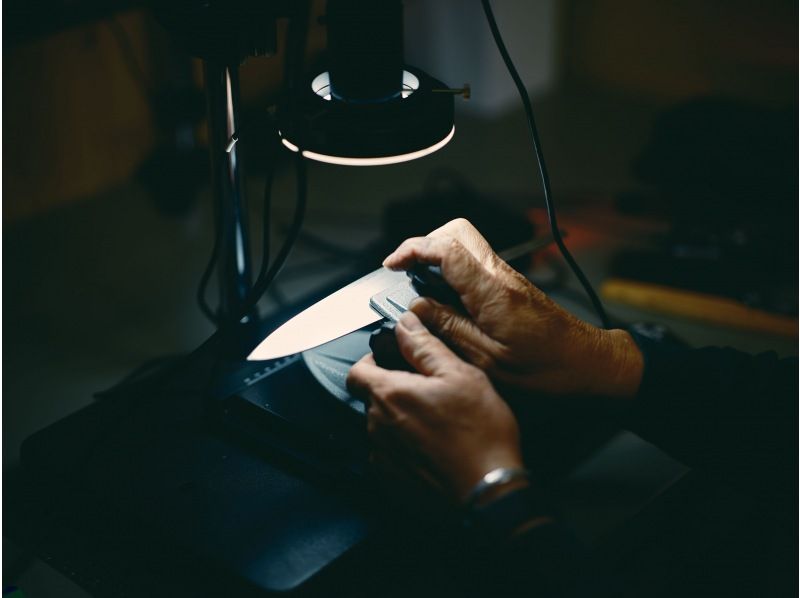
" traditional crafts Is there anything there? "or" What kind of traditional crafts are there? I think there are many people who are researching information such as ``.
As mentioned above, there are currently 241 types of traditional crafts designated by the government.
The following is based on data released by the Ministry of Economy, Trade and Industry (as of November 16, 2020). Summary of “types of traditional crafts” by prefecture I am.
Traditional crafts of Hokkaido
Ita Nibutani / Atsutoshi Nibutani
Traditional crafts of Aomori
Tsugaru lacquerware
Traditional crafts of Iwate
Nanbu ironware / Iwayado chest of drawers / Hidehira lacquerware / Joboji lacquerware
Traditional crafts of Miyagi
Miyagi traditional kokeshi / Ogatsu inkstone / Naruko lacquerware / Sendai chest of drawers
Akita's traditional crafts
Birchwork / Kawatsura lacquerware / Odate magewappa / Akita cedar barrel
Recommended experience plan
You can choose your favorite "experience kit" and enjoy the process of making Odate Magewappa by hand. Traditional craftsmen will carefully support you until completion! While enjoying the production process, you can also learn about traditional techniques, Akita cedar, and how to handle Magewappa. Various Magewappa works are displayed and sold in the store.
The Yuzawa area has many attractions, including Akinomiya Onsenkyo, the oldest hot spring resort in the prefecture, and Kawaraya Jigoku, one of Japan's three major sacred sites along with Mt. Osore and Mt. Tateyama. Here at the Yuzawa City Kawatsura Lacquerware Traditional Crafts Museum, you can experience making lacquerware using the makie technique, which has been used for many crafts since ancient times. Anyone can participate, so please make your own original lacquerware as a memento of your trip.
Traditional crafts of Yamagata
Yamagata casting / Okitama pongee / Yamagata Buddhist altar / Tendo shogi pieces / Uetsu cloth
Traditional crafts of Fukushima
Aizu lacquerware / Ohori Soma ware / Aizu Hongo ware / Oku-Aizu woven work / Oku-Aizu Showa Karamushi weaving
Traditional crafts of Ibaraki
Yuki Tsumugi / Kasama ware / Makabe stone lantern
Traditional crafts of Tochigi
Yuki Tsumugi / Mashiko ware
Recommended experience plan
- 5.0
- (3 reviews/testimonials)
This is a plan that allows you to make as many pieces as you like within the time you use the electric potter's wheel. There are 45 potter's wheels in the spacious classroom, so both individuals and groups can easily participate. Please wait about 2 months for baking and completion. You will receive a wonderful, one-of-a-kind piece of art that will become a memory of your trip. *Sending finished pieces overseas
- 5.0
- (1 review/experience)
This is a plan where you can make one piece of your choice using ``hand making'', which is made by kneading clay on a table. You can experience it in a spacious classroom with a capacity of 350 people, so please feel free to participate whether you are alone or in a group. What you make with 700g of clay is up to you! Please wait for a while until it is baked and completed. A world that will become a memory of your trip.
Traditional crafts of Gunma
Isesaki Kasuri / Kiryu Ori
Traditional crafts of Saitama
Edo Kimekomi dolls / Kasukabe paulownia chest of drawers / Iwatsuki dolls / Chichibu meisen / Gyoda tabi
Recommended experience plan
Please contact us if you are a group of men only, as we may be conducting a women-only kimono dressing experience in a separate room. ***** Experience the traditional techniques of Iwatsuki, Saitama City, a town of dolls that has been around for over 100 years. Making Edo Kimekomi dolls. Choose your favorite color and pattern from over 10 types of kimono fabric and create a one-of-a-kind original doll. Beginners are welcome.
Traditional crafts of Chiba
Boshu Uchiwa / Chiba Koshogu
Traditional crafts of Tokyo
Murayama Oshima Tsumugi / Tokyo Somekomon / Authentic Kihachijo / Edo Kimekomi Dolls / Tokyo Silverware / Tokyo Hand-painted Yuzen Tama Ori / Edo Japanese Rod / Edo Sashimono / Edo Karakami / Edo Kiriko / Edo Festival Dolls / Edo Woodblock Prints / Edo Glass Edo tortoiseshell / Tokyo antimony crafts / Tokyo plain dyeing / Edo oshie / Tokyo shamisen / Tokyo koto / Edo mounting
Recommended experience plan
- 5.0
- (2 reviews/testimonials)
A plan where you can enjoy the world of Edo Kiriko, where the delicate skills of craftsmen shine. Since no fire is used, children in the first grade of elementary school can participate. This technique of creating patterns on a plate using a diamond grinder is recommended for those who want to concentrate quietly. You'll definitely fall in love with it! Grinding with a diamond grinder is a dynamic but delicate task that requires a lot of force. Go
- 5.0
- (1 review/experience)
Why not try your hand at Kiriko craft (cut glass) in Inage Ward, Chiba Prefecture? I'm sure you've seen cutlery vessels for sale, but with this plan you can actually make a cutlery plate! It may seem difficult at first glance to experience using glass, but don't worry, we will fully support even beginners. appear at the top of the image
Recommended feature articles
Traditional crafts of Kanagawa
Kamakura-bori / Hakone marquetry / Odawara lacquerware
Traditional crafts of Niigata
Shiozawa Tsumugi / Ojiya Chijime / Ojiya Tsumugi / Murakami wood carving Tsuishu / Shiozawa / Kamo Kiri chest of drawers / Niigata Shirane Buddhist altar Nagaoka Buddhist altar / Sanjo Buddhist altar / Tsubame hammered bronze ware / Tokamachi Kasuri / Tokamachi Akashi chijimi / Echigo Yoita cutlery / Niigata lacquerware Uetsu cloth / Echigo Sanjo cutlery
Traditional crafts of Yamanashi
Koshu crystal precious stone work / Koshu Inden / Koshu hand carved seal
Traditional crafts of Nagano
Shinshu pongee / Kiso lacquerware / Iiyama Buddhist altar / Matsumoto furniture / Uchiyama paper / Nagiso potter's wheel work / Shinshu cutlery
Traditional crafts of Gifu
Hida Shunkei / Ichiichi Ittobori / Mino ware / Mino washi paper / Gifu lantern / Gifu Japanese umbrella
Traditional crafts of Shizuoka
Suruga Bamboo Crafts / Suruga Hina Dolls / Suruga Hina Dolls
Traditional crafts of Aichi
Arimatsu/Narumi shibori / Tokoname ware / Nagoya Buddhist altar / Mikawa Buddhist altar / Owari Buddhist altar / Toyohashi brush / Akatsu ware / Okazaki stonework Nagoya paulownia chest / Nagoya Yuzen / Nagoya black crest dyeing / Owari cloisonné / Seto dyed ware / Sanshu Onigawara crafts Items / Nagoya Festival decorations
Traditional crafts of Mie
Iga kumihimo / Yokkaichi Banko ware / Suzuka sumi / Iga ware / Ise katagami (tools)
Traditional crafts of Toyama
Takaoka copperware / Inami carving / Takaoka lacquerware / Etchu washi paper / Shogawa turned wood (materials) / Etchu Fukuoka sedge hat
Traditional crafts of Ishikawa
Kaga Yuzen / Kutani ware / Wajima lacquerware / Yamanaka lacquerware / Kanazawa Buddhist altar / Nanao Buddhist altar / Kanazawa lacquerware / Ushikubi Tsumugi Kaga embroidery / Kanazawa foil (materials)
Recommended experience plan
In this program, while receiving lectures from Kutani ware traditional craftsmen and instructors, you will experience overglazing using five Kutani colors (green, yellow, dark blue, purple, red) on a white base fired in a Miyayoshi pottery kiln. We will take a factory tour. *For second and subsequent visits, if you wish, you can switch from factory tour time to painting time. ~Flow of the day~9:50
[Ishikawa/Kanazawa] Try the historical tradition of Kaganui! Embroidery experience
This is a Kaga embroidery experience plan where you can experience making key chains, straps, and mini frames using Kaga embroidery techniques. A traditional craftsman will teach you in an easy-to-understand manner so that even first-timers can experience it easily. What's more, you can see the delicate work of traditional craftsmen up close, which makes it easier to visualize.
Traditional crafts of Fukui
Echizen lacquerware / Echizen washi paper / Wakasa agate work / Wakasa lacquerware / Echizen cutlery / Echizen ware / Echizen chest of drawers
Recommended experience plan
This is a plan where you can have Echizen ware mugs painted with lacquer in Sabae City, Fukui Prefecture. Our lacquer craftsmen will carefully and happily guide you in making original mugs that combine two traditional crafts: ``Echizen ware'' and ``lacquer coating.'' You can also see how lacquer is produced in the workshop. This is a private plan limited to one group per time period, so other
Nishikikori Lacquerware Store is a lacquerware workshop run by brothers in Kawada, the town of Echizen lacquerware. In this experience, you will receive direct instruction from Masataka Nishikikori, a craftsman at Nishikikori Lacquerware Store, and try your hand at wiping lacquer on a wooden tray. The tray can be used for serving meals or as a tray for breakfast or snacks, making everyday moments your favorite time.
Fukui's traditional craft "Echizen Uchihamono". Echizen cutlery, which is now attracting attention not only in Japan but also overseas, is characterized by its sharpness, which is created by craftsmen. The tour will visit two workshops: Yamaken Woodworks, which specializes in making handles for Echizen cutlery, which are rare in Japan, and Ryusen Knives, which makes knives with beautiful, unique ripple patterns.
Traditional crafts of Shiga
Hikone Buddhist altar / Shigaraki ware / Omi Jofu
Recommended experience plan
This is Shigaraki Pottery Tanuki Village in Shiga Prefecture! The biggest raccoon dog in Japan will welcome you ♪ This is Shigaraki ware! Handmade raccoon dog ◎Use a mold to arrange the traditional Shigaraki raccoon dog in your own way! Why not make your own wonderful raccoon dog in the world?
Traditional crafts of Kyoto
Nishijin textile / Kyoto Kanoko Shibori / Kyoto Buddhist altar / Kyoto Buddhist utensils / Kyoto lacquerware / Kyoto Yuzen / Kyoto Komon / Kyoto joinery / Kyoto embroidery Kyoto kumihimo / Kyoto ware/Kiyomizu ware / Kyoto folding fan / Kyoto fan / Kyoto black crest dyeing / Kyoto stone crafts / Kyoto dolls / Kyoto mounting
Recommended experience plan
- 5.0
- (1 review/experience)
Have fun learning about Kyoto's culture! Try Kyoto's traditional craft, "Hand-painted Yuzen." You can experience hand-painted Yuzen by choosing your favorite pattern such as butterflies, rabbits, and tigers on handkerchiefs processed with gold-plated metal. In addition to handkerchiefs, the items produced include masks, school tote bags, and T-shirts. The mask is hand-painted on a plain white mask (cat or fox).
- 5.0
- (5 reviews/testimonials)
This is a Kyoto ware/Kiyomizu ware pottery experience at Heian Gyokuo Toen. Families, friends, and couples can participate on the first floor of Hotel Emion Kyoto in Umekoji, Kyoto. Using an electric potter's wheel, you will have a potter's wheel experience with a Tamao-gama potter. The craftsmen of Kyo-yaki and Kiyomizu-yaki kilns will provide gentle and careful guidance. Declaration of traditional crafts throughout Japan! Heian Gyokuo Pottery Garden and Let'sto
This is an experience plan for making a braided cord strap. The plan to make 1 bottle takes about 1 hour, and the plan to make 2 bottles takes about 1 hour and 30 minutes. Choose your favorite color from the silk thread wrapped around the ball and set it on the braid stand. If you follow the prescribed braiding method and make sure not to make any mistakes, the threads of the selected colors will combine to create a beautiful braid. Strap using that braid
Traditional crafts of Osaka
Osaka transom / Osaka karaki wood joinery / Sakai cutlery / Osaka Buddhist altar / Osaka Naniwa tin ware / Osaka Senshu paulownia chest / Osaka Kongorens / Naniwa dyeing
Traditional crafts of Hyogo
Banshu soroban / Tamba Tatekui ware / Izushi ware / Banshu kebari / Toyooka kiryu work / Banshu Miki cutlery
Traditional crafts of Nara
Takayama chasen / Nara brush / Nara ink
Recommended experience plan
- 5.0
- (2 reviews/testimonials)
This is a plan where you can experience the final rounding and finishing of the 12 steps of Nara brush making. The brush shaft is shaved with a knife to match the size of the head, the head is glued on, the head (hair part) is soaked in funori, and hemp thread is wound to shape it. It may be a little difficult, but Tanaka, a traditional craftsman, will thoroughly teach you, so don't worry.
This is a plan where you can experience the final finishing step of brush making, ``bokubi finishing''. The head (hair part) is soaked in Funori, and hemp thread is tied around it to shape it. It may be a little difficult, but Tanaka, a traditional craftsman, will thoroughly teach you, so please participate with confidence. You can take home the brushes used in the experience.
Traditional crafts of Wakayama
Kishu lacquerware / Kishu chest of drawers / Kishu spatula
Recommended experience plan
- 5.0
- (1 review/experience)
The main production area is the Kuroe district of Kainan City, which is a traditional craft handed down in Wakayama Prefecture, which flourished as a castle town of the three Tokugawa families. It is said to be one of the three major production areas in Japan, along with Aizu lacquerware and Yamanaka lacquerware. Learn how to make your own chopsticks using lacquer taught by a craftsman of Kishu lacquerware, which is said to be one of the three major lacquerwares. Designs are added using lacquer rather than paint or ink. craftsman directly
This is an experience in making the traditional craft "Kishu Hera-pole" provided by the Koyasanroku Tourism Bureau. At the "Takumi Kobo" attached to Kiishimizu Station on the Nankai-Koya Line in Hashimoto City, Wakayama Prefecture, you can watch craftsmen make the "Kishu Hera-gashira", a national traditional craft made from three types of natural bamboo. You can experience ``heating'' and ``shafting the tips'' which are part of the manufacturing process.
Traditional crafts of Tottori
Inshu washi paper / Yumihama Kasuri / Izumo stone lantern
Traditional crafts of Shimane
Izumo stone lantern / Unshu abacus / Sekishu washi / Iwami ware
Traditional crafts of Okayama
Katsuyama Bamboo Crafts / Bizen Ware
Recommended experience plan
- 5.0
- (4 reviews/testimonials)
At the Kanpū Ceramic Art Center, we regularly hold pottery classes where visitors can easily experience the joy of hand-making and clay twisting. We offer a variety of pottery making experiences, from everyday pottery to authentic Bizen ware. We can accommodate groups of 1 to 100 people. We offer several types of courses, so you can
- 5.0
- (1 review/experience)
Why don't you experience the good old traditional beauty of Bizen ware at Mugen-an? High quality clay is carefully baked without glaze.It is created by the very natural encounter and fusion of clay and flame. Bizen ware is a simple and handmade pottery that gives you a sense of warmth. On a vast site surrounded by rich nature, you can freely use the extensive pottery equipment.
Traditional crafts of Hiroshima
Kumano brush / Hiroshima Buddhist altar / Miyajima craft / Fukuyama koto / Kawajiri brush
Recommended experience plan
[Hiroshima/Fukuyama] Koto experience class | You can master "Sakura Sakura" in 1 hour ☆
We offer Fukuyama koto experience classes in the ``koto town of Fukuyama,'' which accounts for 70% of the nation's production of kotos! The experience location is located in the middle of Fukuyama Hondori Shopping District, an 8-minute walk from JR Fukuyama Station. ◆Trial fee◆3,800 yen per person◆Required time◆Approximately 1 hour <What is Fukuyama koto?> The Fukuyama koto, created by the skilled craftsmanship of koto craftsmen, has a first-class tone, complex wood grain, and flowers.
Traditional crafts of Yamaguchi
Akama inkstone / Ouchi lacquerware / Hagiyaki
Traditional crafts of Tokushima
Awa washi paper / Awa indigo shijiraori / Otani ware
Traditional crafts of Kagawa
Kagawa lacquerware / Marugame fan
Traditional crafts of Ehime
Tobe ware / Ozu Japanese paper
Traditional crafts of Kochi
Tosa washi paper / Tosa cutlery
Recommended experience plan
Why not experience Japanese traditional craft culture at a blacksmith shop? In a modern society that places emphasis on digital networks, analog techniques such as blacksmithing's "handcraft" and "intuition" have become far removed from everyday life. At Tatara Ironworks Ancient Forging Workshop Kurogane, located on the shores of the Shimanto River in Kochi Prefecture, between the mountains and the river, you can try your hand at blacksmithing, which has been passed down since ancient times in Japan.
Traditional crafts of Fukuoka
Koishiwara ware / Hakata dolls / Hakata weave / Kurume Kasuri / Yame Fukushima Buddhist altar / Ueno ware / Yame lanterns
Recommended experience plan
[Fukuoka/Hakata] Would you like to freely paint Hakata dolls at a traditional craftsman's workshop?
- 5.0
- (2 reviews/testimonials)
This is an experience plan where you can create your own original Hakata doll by adding color to the face, clothes, etc. of unpainted Hakata dolls (unpainted) made by traditional craftsman Yuki Tanaka, a Hakata doll maker. It has the shape of a clay bell, which brings good luck, and when you shake it, you can hear the goodness of the soil. There are several types of animals and humanoids, so you can choose the one you like and make it. The work is as it is
Traditional crafts of Saga
Imari/Arita ware/Karatsu ware
Recommended experience plan
- 5.0
- (2 reviews/testimonials)
You can add your own brushstrokes and create a one-of-a-kind work of art. You can modify and redraw as many times as you like, so even beginners can take the plunge. A writer with over 40 years of experience will provide kind guidance. The experience takes approximately 1 hour. Even small children can participate, so you can create a piece of art as a memento of your family trip or as a memento of your child's growth.
You can add your own brushstrokes and create a one-of-a-kind work of art. You can modify and redraw as many times as you like, so even beginners can take the plunge. A writer with over 40 years of experience will provide kind guidance. The experience takes approximately 1 hour. Even small children can participate, so you can create a piece of art as a memento of your family trip or as a memento of your child's growth.
Traditional crafts of Nagasaki
Mikawachi ware / Hasami ware / Nagasaki tortoiseshell
Traditional crafts of Kumamoto
Shodai ware / Amakusa ceramics / Higo Zogan / Yamaga lantern
Oita traditional crafts
Beppu bamboo crafts
Traditional crafts of Miyazaki
Authentic Oshima Tsumugi / Miyakonojo Oyumi
Traditional crafts of Kagoshima
Authentic Oshima Tsumugi / Kawabe Butsudan / Satsuma ware
Recommended experience plan
[Kagoshima City] Weaving experience for children (with admission ticket)
<About the experience> This is a plan exclusively for children. In this plan, there is no matching of traditional patterns, but rather you can choose your favorite colored thread (kasuri thread) and create a striped piece. You can take the finished piece home on the day and use it as a table center or vase mat. *The length of the finished weaving will vary from person to person. <Experience benefits>
Traditional crafts of Okinawa
Kumejima Tsumugi / Miyako Jofu / Yomitanyama Hanori / Yomitanyama Minsa / Tsuboya Ware / Ryukyu Kasuri / Shuri Ori / Ryukyu Bingata Ryukyu Lacquerware / Yonaguni Ori / Kijoka Bashofu / Yaeyama Minsa / Yaeyama Jofu / Chibana Hanori / Haebaru Hanori / Sanshin
Recommended experience plan
[Near Churaumi Aquarium] Okinawan traditional craft "Let's make a Bingata tote bag!" ”About 1 hour
- 5.0
- (1 review/experience)
Traditional Okinawan dyeing [bingata]. You can make colorful tote bags! You can take it home on the day! What is Bingata? Bingata was developed as a costume for the royal family during the Ryukyu Dynasty. It is characterized by its vivid colors, which are based on red, yellow, blue, green, and purple. ``Add color'' using pigments and vegetable dyes. Even children can enjoy cloth coloring.
- 4.5
- (1 review/experience)
Let's try Yaeyama's traditional craft "Minsa weaving". Would you like to try your hand at making flower weaving, which is woven from women's hearts, on a southern island rich in nature?
Traditional craft experience popular plan ranking
Finally, based on Activity Japan's latest reservation data, traditional crafts Popular experience plan ranking ” will be introduced.
Traditional crafts include In addition to those designated by the country, there are also things that have been passed down from ancient times in each region. Masu.
Including the experience contents and fees (price), Reputation based on reviews and testimonials Please use this as a reference when choosing a plan.
You can choose your favorite "experience kit" and enjoy the process of making Odate Magewappa by hand. Traditional craftsmen will carefully support you until completion! While enjoying the production process, you can also learn about traditional techniques, Akita cedar, and how to handle Magewappa. Various Magewappa works are displayed and sold in the store.
- 4.8
- (26 reviews and experiences)
``Traditional craft experience where you can try forging'' Please try your hand at work such as hammering with a hammer, trimming with a metal file, sharpening, hardening, and sharpening. A thrilling experience awaits as ordinary metal is transformed into a knife. Would you like to experience traditional Japanese techniques?
This is a plan where you can have Echizen ware mugs painted with lacquer in Sabae City, Fukui Prefecture. Our lacquer craftsmen will carefully and happily guide you in making original mugs that combine two traditional crafts: ``Echizen ware'' and ``lacquer coating.'' You can also see how lacquer is produced in the workshop. This is a private plan limited to one group per time period, so other
You can experience "Keshi Makie", a traditional craft and lacquer art technique. It will be held at the workshop of "Yamasen Tsuji Butsudan", which boasts a history of over 100 years. Suitable for all ages. You will draw designs of your choice using a makie brush. It is safe for the skin as we use a substitute lacquer that does not cause rashes. It is a traditional craft that even clumsy people can do. Please come to the store without worrying.
- 5.0
- (5 reviews/testimonials)
This is a Kyoto ware/Kiyomizu ware pottery experience at Heian Gyokuo Toen. Families, friends, and couples can participate on the first floor of Hotel Emion Kyoto in Umekoji, Kyoto. Using an electric potter's wheel, you will have a potter's wheel experience with a Tamao-gama potter. The craftsmen of Kyo-yaki and Kiyomizu-yaki kilns will provide gentle and careful guidance. Declaration of traditional crafts throughout Japan! Heian Gyokuo Pottery Garden and Let'sto
[Kyoto/Shimogyo Ward] Kiyomizu ware mug and teacup painting experience
Kyoto駅近くの『Kyotoタワー』で日本の伝統文化を体験することができMasu.アクセスのしやすい【Akaneya Kyoto Tower Sand Shop】では小さなお子様からおじいちゃんおばあちゃんまで様々なtraditional crafts体験をして頂けMasu.多店舗では珍しい『清水焼(マグカップ・湯呑)上絵付体験』にチャレンジ。ご旅行の思い出作りにいかがでし
- 5.0
- (2 reviews/testimonials)
In this plan, you can choose your favorite from the M course, T-shirts (90 - XXXL), and tote bags (M size).We will teach you the entire process of Japanese traditional craft "Baikzome" from painting to dyeing and drying. You will experience "up to". No drawing required, even children can do it! ! Roketsu dyeing craftsmen will provide careful guidance. A lot
- 5.0
- (4 reviews/testimonials)
Weave your own coaster on a loom. The size is approximately 10cm x 10cm. Express yourself with traditional handlooms, tools, and techniques. Beautiful colored threads are carefully woven together, and the design that gradually emerges is a representation of you in Nishijin-ori. You can also choose to frame the coaster you have woven. Add a touch of Kyoto to your room's interior decor.
[Kyoto, Shijo Station/Karasuma] Stamp making experience in the heart of Kyoto
* Make your own Kyoto seal, a traditional Kyoto craft, under the guidance of a professional! * Experience a unique and special experience that will allow you to come into contact with Japan's profound "kanji culture." * Experience both carving with a special machine and hand-carving with a craftsman's tool (seal knife). * You can frame your completed original seal and take it home as a memento of your trip. * Located in Shichinohe, the heart of Kyoto,
[Kyoto, Ukyo Ward] Experience authentic dyeing at a Kyoto studio
This is a special program where you can experience the traditional Kyoto craft of "Itaba Yuzen." Under the guidance of a skilled craftsman, you can create your own unique stencil dyed piece and take it home. You can experience the joy of handcrafting and the beauty of color up close while learning about the history and culture of stencil dyeing. The finished piece will remain as a memory, and you will also gain a sense of discovery and accomplishment in the production process, making this a valuable experience that can only be experienced here.
*The contents of this article are current as of January 2024.


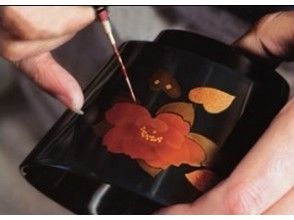
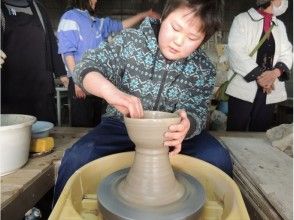

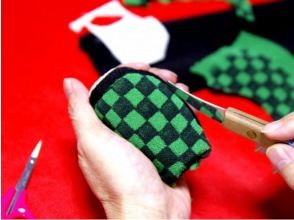

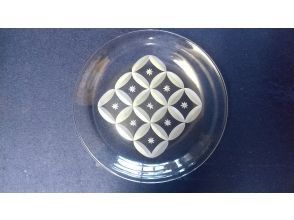
![[Currently popular] Edo Kiriko experience class & recommended plan introduction - Glass crafts Tokyo brand passed down from the Edo period - Images](https://img.activityjapan.com/wi/2017_edokiriko_thumb.jpg)
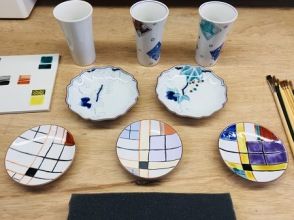
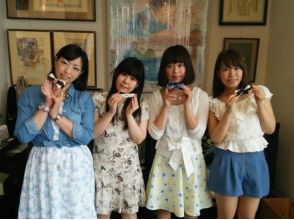
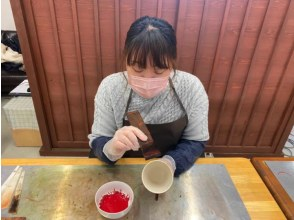
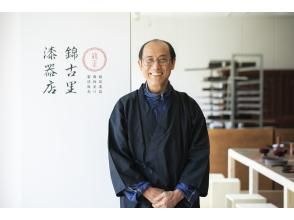
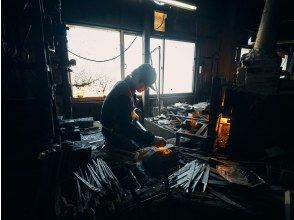
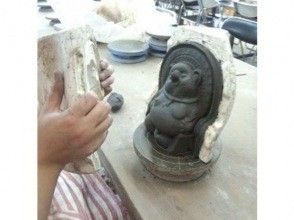

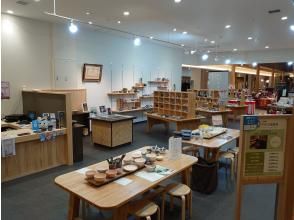
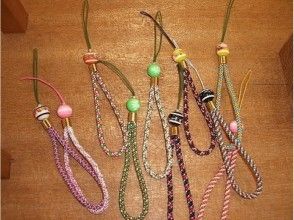
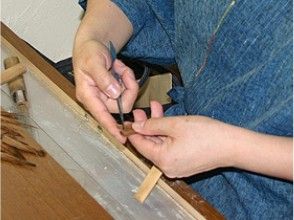


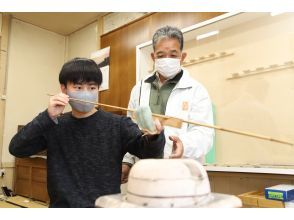

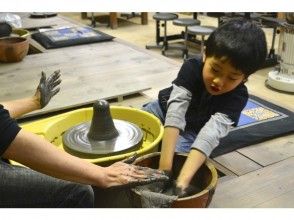
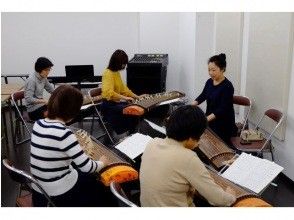
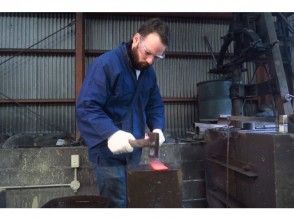
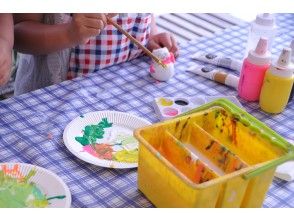



![[Maimai Shisa] Cute Shisa coloring & Shisa making experience specialty store](https://img.activityjapan.com/10/38070/10000003807001_lUWQ75q0_2.jpeg)


